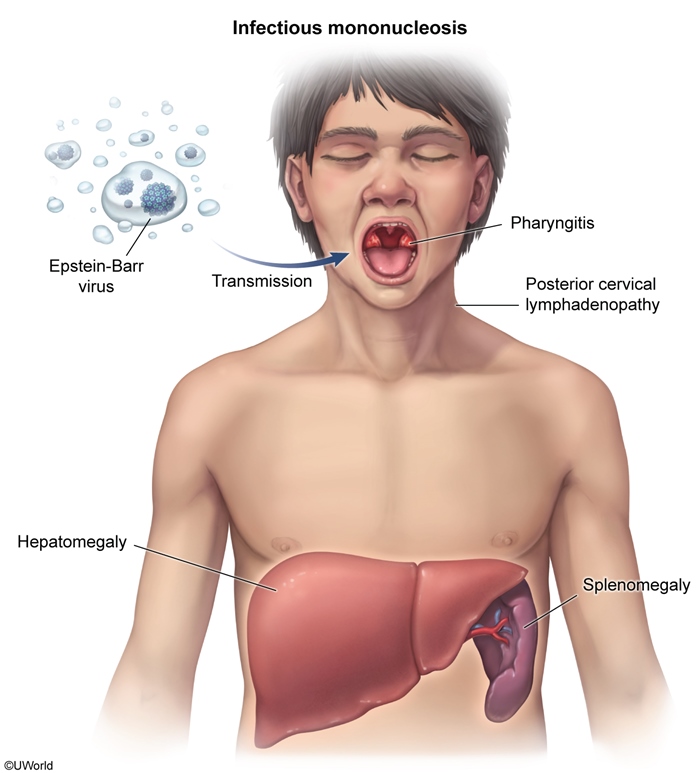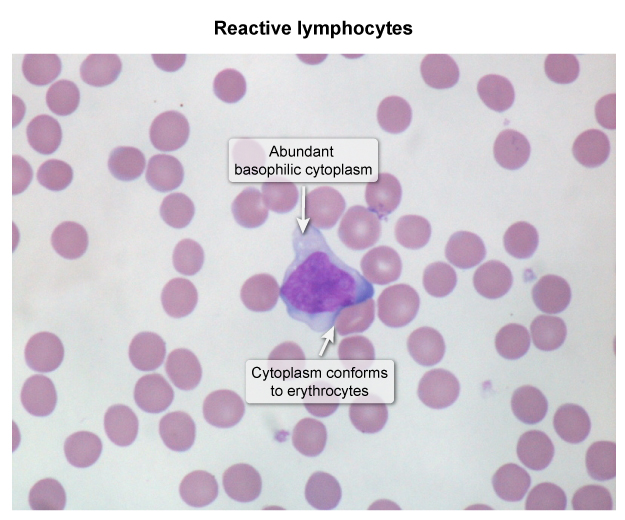Infectious Mononucleosis
Article Sections
Introduction
Infectious mononucleosis (IM) is a systemic viral illness that most commonly presents in adolescents and young adults with fever, fatigue, pharyngitis, lymphadenopathy, and splenomegaly. The most common cause of IM is Epstein-Barr virus (EBV), although a minority of causes are due to other viruses (eg, cytomegalovirus, HIV).
The remainder of this article will focus on EBV-related infectious mononucleosis.
Pathogenesis
IM is a systemic, often prolonged viral illness caused by Epstein-Barr virus (EBV), which is transmitted primarily by mucosal contact with infectious saliva (eg, kissing).
After entering the bloodstream through the pharyngeal mucosa and tonsillar crypts, EBV preferentially infects B lymphocytes. EBV-infected B lymphocytes then disseminate through the lymphoreticular system (eg, lymph nodes, spleen) and activate cytotoxic T lymphocytes (CD8+). These reactive (atypical) CD8
Continue Learning with UWorld
Get the full Infectious Mononucleosis article plus rich visuals, real-world cases, and in-depth insights from medical experts, all available through the UWorld Medical Library.
Figures

Images

